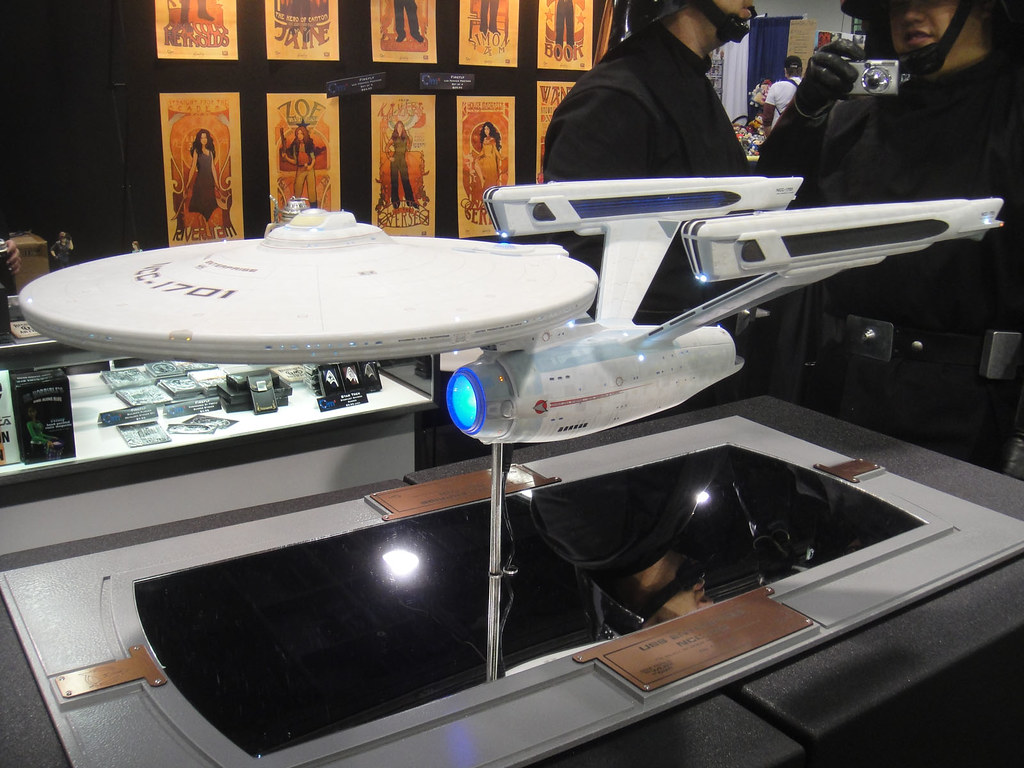
In a bold call to action reminiscent of science fiction’s grandest dreams, a petition seeking to prompt the White House to commission a feasibility study for building a real-life version of the Starship Enterprise from the “Star Trek” series has stirred the imaginations of enthusiasts nationwide.

Despite failing to garner the required 25,000 signatures in 2013, the ambitious concept, championed by an engineer known as BTE Dan, casts a lingering spell over those captivated by the convergence of science, technology, and the timeless allure of space exploration.

The initial petition, which was launched through the White House’s official “We the People” portal, aimed to lay the groundwork for what could be humanity’s first gigawatt-class interplanetary spaceship capable of providing artificial gravity.

BTE Dan’s vision was not only to create a vessel that doubled as a space station and port but also to inspire a new generation of spacefarers by taking on ambitious missions like establishing the first permanent base on Mars.

Despite the setback in signature gathering, the continued advancement of technology in areas such as artificial intelligence, privatized space exploration, and planned missions to Mars suggests that the dream of space travel akin to that in “Star Trek” is inching closer to reality.

The proposed Enterprise would not be a mere novelty but a beacon of progress, with the potential to house up to one thousand crew members and visitors.

The design, as detailed on BuildTheEnterprise.org, included extensive and conceptual specifications, embracing the iconic form of the Constitution-Class vessel as seen on screen, but with a practical, functional twist for real-world application.

While BTE Dan’s proposal might seem a leap for current capabilities—especially considering that no technology for artificial gravity exists to date, and the record number of occupants for a space vehicle stands at just 13—it resonates with the grand tradition of dreaming big in American space endeavors.

It is a tradition shared by 100 Year Starship, a venture initiated with backing from NASA and the U.S. Defense Advanced Research Projects Agency (DARPA) that similarly seeks to achieve interstellar flight within the coming century.

The petition stands as a testament to the enduring power of science fiction to inspire real-world innovation, reflecting a deep-seated human desire to reach beyond our planetary confines and venture into the vastness of space.

As BTE Dan expressed, the building of such a ship in space would captivate public interest and could stimulate a resurgence in the study of STEM subjects.

The fate of the Enterprise petition diverged starkly from another science fiction-inspired campaign, which called for the creation of a Death Star akin to the formidable space station in the “Star Wars” saga.

That petition exceeded the signature threshold and elicited an official—if not serious—response from the White House.

Reflecting on the petition system, BTE Dan lamented the tendency for emotionally charged issues to dominate, calling for a reevaluation that might allow for more substantive proposals to emerge. He suggested that lengthening the petition signature window could provide such opportunities.

The yearning for a real-life Starship Enterprise may have to wait for another era, perhaps until the fictional timeline of 2063 draws closer, when “Star Trek” lore predicts the invention of the warp drive by Zefram Cochrane.
Relevant articles:
– The White House Was Once Petitioned To Build A Real Star Trek Starship Enterprise, Giant Freakin Robot
– Engineer Petitions White House for Real-Life Starship Enterprise, Space.com
– Engineer Petitions The White House To Build The Starship Enterprise, DigitalOcean
– It’s dead, Jim: White House petition to build Starship Enterprise fizzles, NBC News

